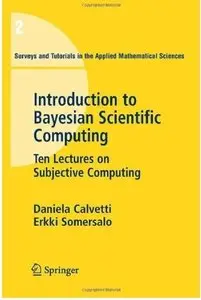Daniela Calvetti, Erkki Somersalo - Introduction to Bayesian Scientific Computing: Ten Lectures on Subjective Computing
Published: 2007-12-20 | ISBN: 0387733930 | PDF | 202 pages | 4 MB
A combination of the concepts subjective – or Bayesian – statistics and scientific computing, the book provides an integrated view across numerical linear algebra and computational statistics. Inverse problems act as the bridge between these two fields where the goal is to estimate an unknown parameter that is not directly observable by using measured data and a mathematical model linking the observed and the unknown.
Inverse problems are closely related to statistical inference problems, where the observations are used to infer on an underlying probability distribution. This connection between statistical inference and inverse problems is a central topic of the book. Inverse problems are typically ill-posed: small uncertainties in data may propagate in huge uncertainties in the estimates of the unknowns. To cope with such problems, efficient regularization techniques are developed in the framework of numerical analysis. The counterpart of regularization in the framework of statistical inference is the use prior information. This observation opens the door to a fruitful interplay between statistics and numerical analysis: the statistical framework provides a rich source of methods that can be used to improve the quality of solutions in numerical analysis, and vice versa, the efficient numerical methods bring computational efficiency to the statistical inference problems.
This book is intended as an easily accessible reader for those who need numerical and statistical methods in applied sciences.



